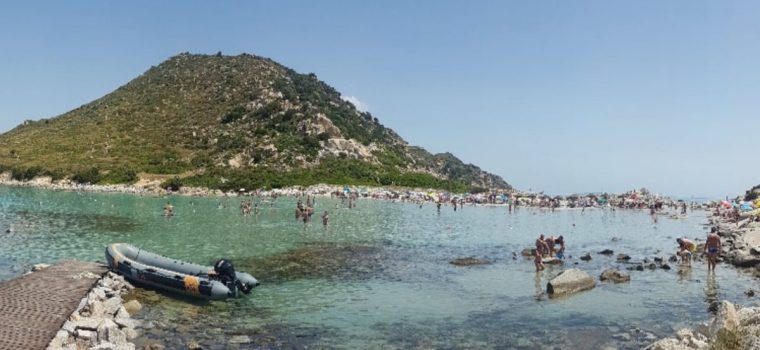Locals in Sardinia are up in arms – with one saying visiting the beach is for the ‘elite’
In a small corner of the Mediterranean, where tourists flock each summer to sunbathe on white sand beaches and swim in the turquoise sea, Italian residents are up in arms.
The issue? Parking. Soon, the residents of Muravera, a cozy seaside town in the south of Sardinia, will have to pay every time they want to park up and access their local beaches during the summer.
The plan has been introduced by the area’s local authority as a way to combat overtourism. It will see 500 parking slots created along the coast of Piscina Rei, which people will have to pay to use, and likely pay a separate charge to access the beach itself. A cap on the number of people who can visit the beach each day is also expected to be introduced.
But residents complain they will not be exempt from the charges and will instead be forced to pay for the privilege of sunbathing and swimming in the sea, just like tourists.
“I already pay council taxes that include [money for] maintaining our unique coastal environment. Why must I also pay to access beaches which are a part of my home?” pensioner Mario Pinna told The i Paper.
“It’s like paying to sit on public piazza benches; it is unacceptable.”

Muravera is not the first place in Sardinia or Italy to introduce the charge. Dozens of beaches around the island have already introduced parking and entrance fees and caps on visitors to tackle overtourism, with no distinction made between locals and holidaymakers.
Punta Molentis, in the southern municipality of Villasimius, used to be part of an old quarry where donkeys were used to extract and transport huge stones. Now it is one of the top beaches in Sardinia, with a daily cap of 600 sunbathers. Parking is €15 (£13) per car and entrance is €3 (£2.60) for everyone. Bookings are made either online or in person, but the spots go quickly.
“If I go with my family, and we are five people, the daily cost is €30 (£26), plus another €30 if we rent a sun umbrella and two sun beds,” said a waitress at a B&B in Villasimius, who asked not to be named.
“I work during the summer and have only a few days off, which will be last-minute. So booking in time is impossible, and often the site doesn’t work, let alone that we can’t afford those fees.

“We could go for free in autumn and winter, but only foreigners go to the beach then,” she added.
The nearby beach of Sa Ruxi has similar parking and entry fees, though the local bookings office states there are seasonal beach subscriptions for Villasimius residents to access other smaller (and less beautiful) beaches for €50 (£44).
One bartender at a café in Villasimius, who also wished not to be named, said he now went hiking on his days off instead of sunbathing because being able to access the beach has become too “elite”.
Both Villasimius’ and Muravera’s mayors’ offices declined to comment on the charges.
There are areas in Sardinia where residents are still able to swim for free, such as the eastern resort of Baunei.
“Baunei is a small town where everyone knows each other,” mayor Monni Stefano told The i Paper. Six beaches have daily visitor caps and fees of up to €7 (£6) per person to enter, but locals are immediately recognised at the entrance and spared the charge.
Not everyone in Sardinia disagrees with the charges, however. In the northern village of Stintino, where local authorities have placed a daily cap of 1,500 sunbathers at La Pelosa beach and a €3.50 (£3) entry fee, locals say they are happy to pay.
“It’s positive that we residents also contribute to safekeeping our beautiful sea habitat,” said Angelo Schiaffino, who runs Musciarra bistrot in Stintino. “We work during summer but can enjoy La Pelosa in May and October when tourists are gone and it’s free.”
Stintino mayor Rita Limbania Vallebella told The i Paper that if residents ever raised the issue of wanting to be exempt from the charges, then she would consider changing the rules, but so far she has not had to.
“It has never been an issue. Historically, during summer, all residents are busy with seasonal tourist jobs. La Pelosa has always been considered as a beach for tourists,” she added.
But for people living in Muravera, the issue is not going away. Mr Pinna believes it would be easy to ensure residents were not charged like tourists: “The best way to exempt residents and distinguish them from visitors is on the basis of their identity card, which clearly states their residency in Muravera once they book online.”
Mr Pinna says anger is mounting among locals, though many feel unable to speak out and have already stopped going to the beaches in the area.
“Many of us are giving up going to our beaches and are driving miles to distant free beaches for a swim, or just sit at home,” he said.
